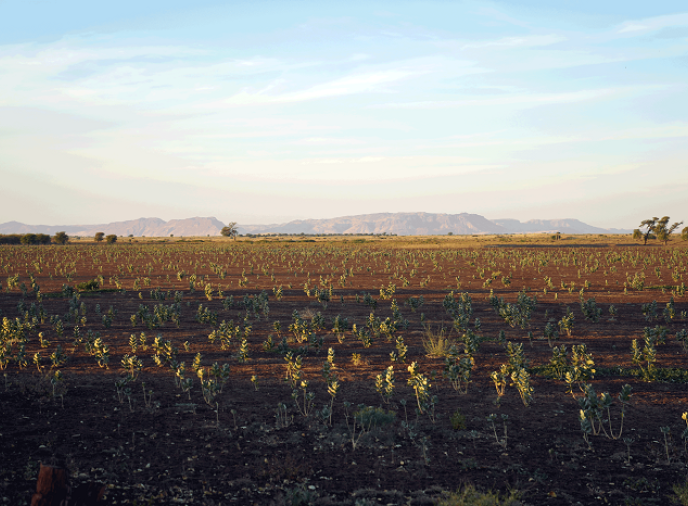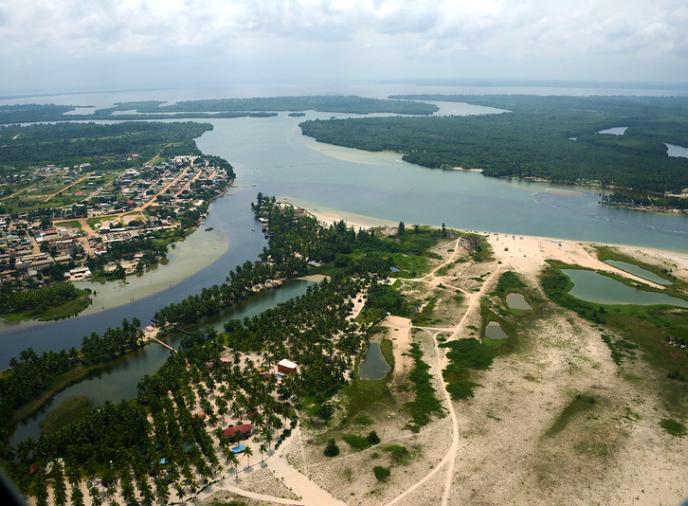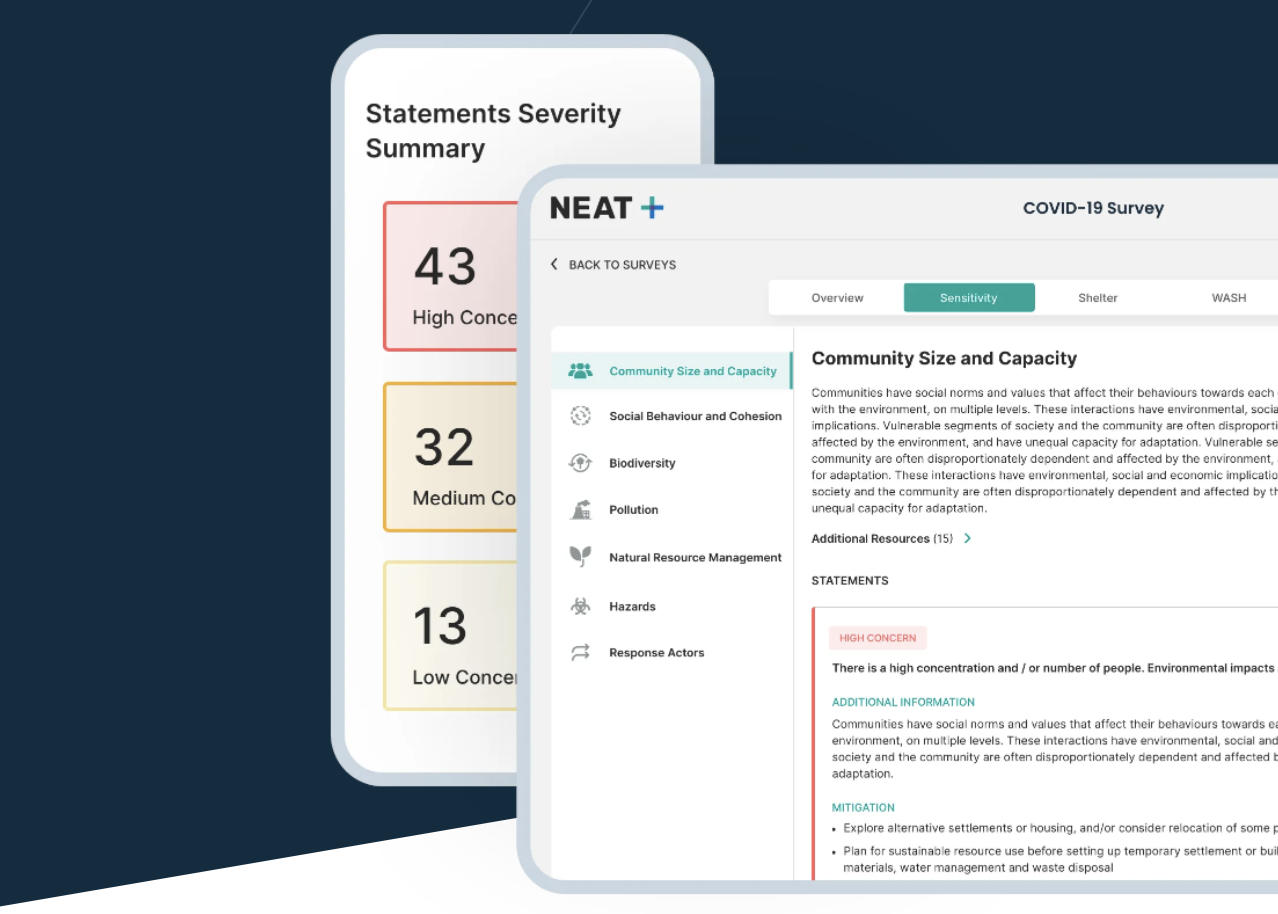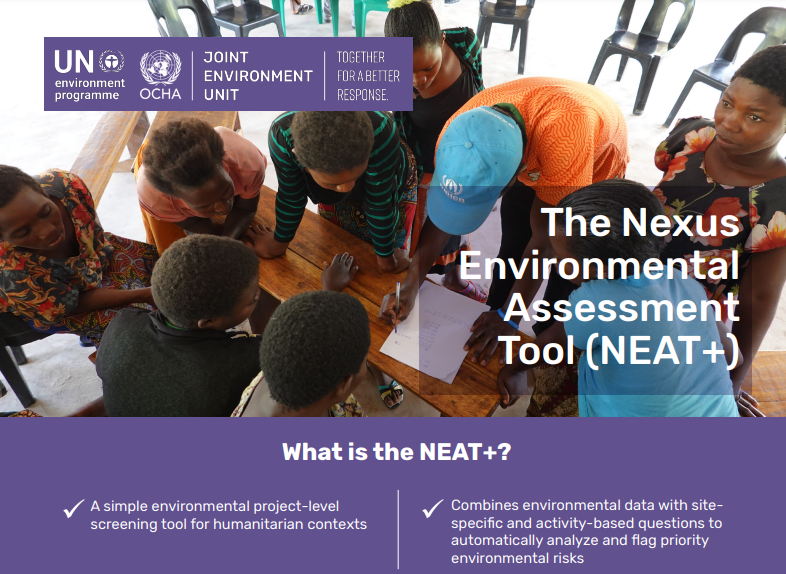Disasters and Conflicts
Disasters and Conflicts and Digital Technologies
Since 1994, UNEP, through its Disasters and Conflicts Branch, has supported more than 50 crisis-affected countries and territories, delivering high-quality environmental expertise to national governments and partners in the UN family. This has included setting-up full-fledged environmental recovery programmes such as in Afghanistan, Haiti, Iraq, Nigeria and Sudan. The need for immediate response is met by the UNEP/OCHA Joint Environment Unit (JEU), which coordinates international emergency response to acute environmental risks caused by conflicts, natural disasters and industrial accidents. The JEU has successfully led over 220 missions since its creation in 1994, and, for over 25 years, has successfully coupled UNEP’s technical expertise with OCHA’s humanitarian coordination mandate.
The fourth industrial revolution has reshaped the way we manage and respond to crisis, by introducing new and emerging technologies in the equation. Digital technologies have the potential to support a paradigm shift in the humanitarian-development-peace nexus from reaction to anticipation by enabling earlier, faster and potentially more effective action. At the same time, the triple planetary crisis of nature loss, pollution and climate change is affecting the most vulnerable, crisis-affected populations the most severely. And their insecurity hinders efforts for climate change adaptation-mitigation or environmental restoration, leaving already vulnerable communities even poorer and less resilient to interlinked climate and security crises. Both trends are rapidly shaping howdisaster risk reduction, response, conflict prevention and peacebuilding activities are carried out, in support of governments and affected populations.
Innovative uses of digital technologies - for climate action, disaster resilience and environmental sustainability - are gaining momentum. Below are examples of how digitally rooted contextual analyses, crisis and ecosystem restoration mapping, and the use of data to break thematic silos are allowing environment protection and humanitarian actors to better assist affected people, predicting and responding to environmental and humanitarian crises.
NEAT +: Rapid and simple project-level environmental screening for humanitarian operations
The NEAT+ is a project-level screening tool, specifically designed for situations of displacement, which combines environmental data with site-specific and activity-based questions to automatically analyze and flag priority environmental risks. This allows the users and organizations to understand environmental sensitivities, mitigate risks, and find opportunities to collaborate on greener humanitarian operations.
For more information
Strata: A web-based, easy-to-use data platform to identify and track environmental and climate stresses
Strata is a web-based, easy-to-use data platform to support practitioners and policymakers to identify and track environmental and climate stresses potentially driving threats to peace and security. Strata allows analysts, policy makers and practitioners to access and use climate security data in their daily work, including to raise awareness of converging risks, to design and prioritise policy and programming responses, and to monitor and evaluate interventions.

To access Strata or to keep informed about its development, please visit :
Opportunity Mapping for Eco-DRR
The “Opportunity mapping tool” was developed by the United Nations Environment Programme (UNEP) Global Resource Information Database (GRID) to provide global data sets on main ecosystem coverage (forests, mangroves, coral reefs, seagrass cover), hazard occurrence (flooding, tsunamis, tropical cyclones and landslide) and exposure (population data in comparison to hazards) in 10X10 km grids globally. The most important feature is the algorithm that analyzes where ecosystem coverage can provide protection against hazards for decision-making on site selection for investment in ecosystem restoration (excerpted from Sudmeier-Rieux et al., 2019).

By overlaying global datasets on ecosystem distribution and hazard exposure, the Opportunity Mapping tool highlights areas where ecosystem restoration and / or protection measures/interventions? can be used to protect the greatest number of people globally.
Specifically, the tool highlight’s geographic locations where ecosystem restoration or protection are particularly appropriate for reducing the impact of certain hazards. Areas where there is an overlap between population exposure to hazards and low ecosystem coverage because they have been depleted, degraded or damaged), are highlighted as areas with opportunities for restoration to reduce disaster risk. In areas where ecosystem coverage and population exposure to certain hazards is high, ecosystem protection, (e.g., through the establishment of protected areas), can further reduce disaster risk, by ensuring that ecosystems stay healthy and protect people and assets (excerpted from Sudmeier-Rieux et al, 2019).
Contact Us: info@unepgrid.ch









